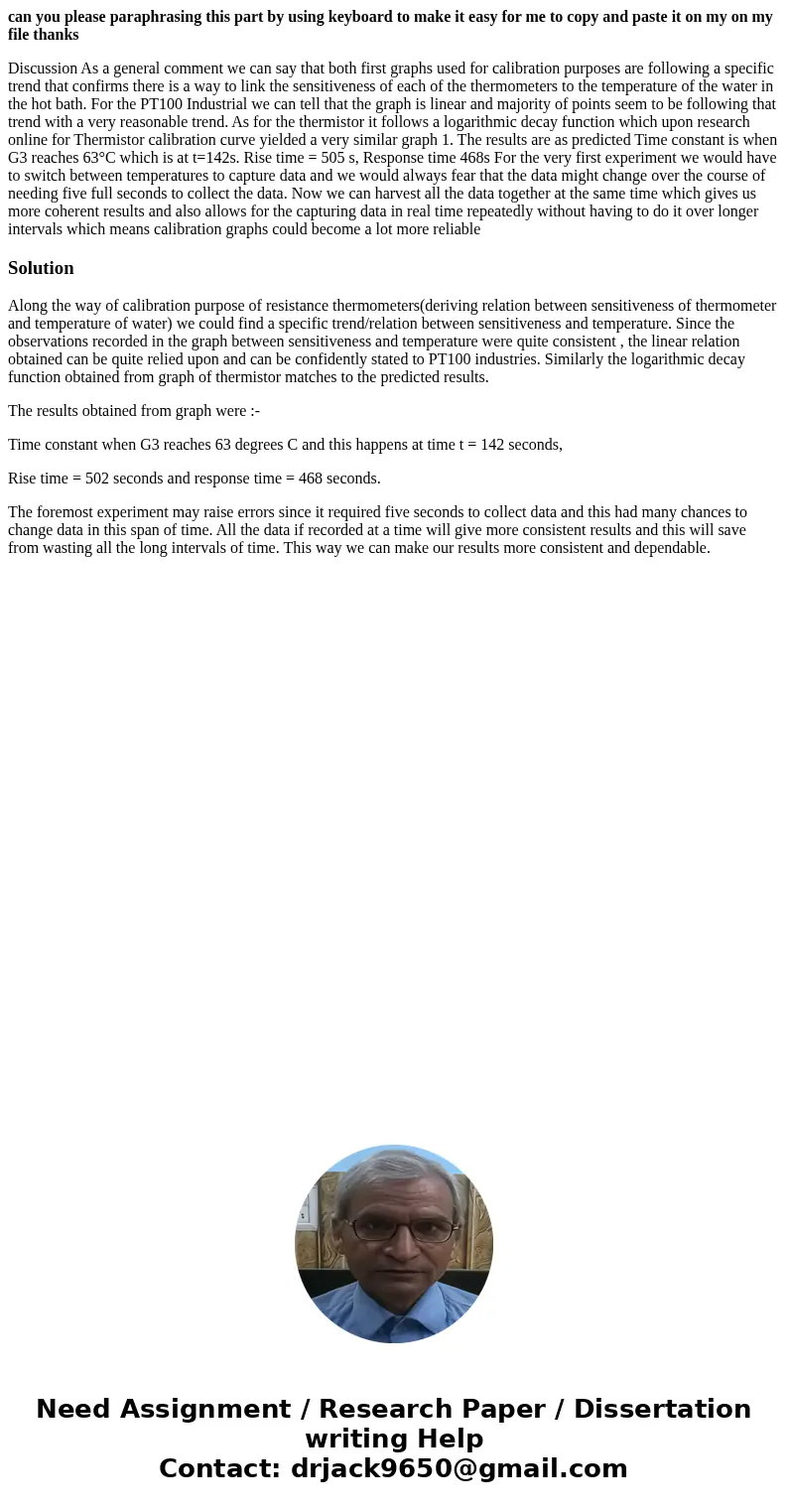can you please paraphrasing this part by using keyboard to m
can you please paraphrasing this part by using keyboard to make it easy for me to copy and paste it on my on my file thanks
Discussion As a general comment we can say that both first graphs used for calibration purposes are following a specific trend that confirms there is a way to link the sensitiveness of each of the thermometers to the temperature of the water in the hot bath. For the PT100 Industrial we can tell that the graph is linear and majority of points seem to be following that trend with a very reasonable trend. As for the thermistor it follows a logarithmic decay function which upon research online for Thermistor calibration curve yielded a very similar graph 1. The results are as predicted Time constant is when G3 reaches 63°C which is at t=142s. Rise time = 505 s, Response time 468s For the very first experiment we would have to switch between temperatures to capture data and we would always fear that the data might change over the course of needing five full seconds to collect the data. Now we can harvest all the data together at the same time which gives us more coherent results and also allows for the capturing data in real time repeatedly without having to do it over longer intervals which means calibration graphs could become a lot more reliableSolution
Along the way of calibration purpose of resistance thermometers(deriving relation between sensitiveness of thermometer and temperature of water) we could find a specific trend/relation between sensitiveness and temperature. Since the observations recorded in the graph between sensitiveness and temperature were quite consistent , the linear relation obtained can be quite relied upon and can be confidently stated to PT100 industries. Similarly the logarithmic decay function obtained from graph of thermistor matches to the predicted results.
The results obtained from graph were :-
Time constant when G3 reaches 63 degrees C and this happens at time t = 142 seconds,
Rise time = 502 seconds and response time = 468 seconds.
The foremost experiment may raise errors since it required five seconds to collect data and this had many chances to change data in this span of time. All the data if recorded at a time will give more consistent results and this will save from wasting all the long intervals of time. This way we can make our results more consistent and dependable.

 Homework Sourse
Homework Sourse